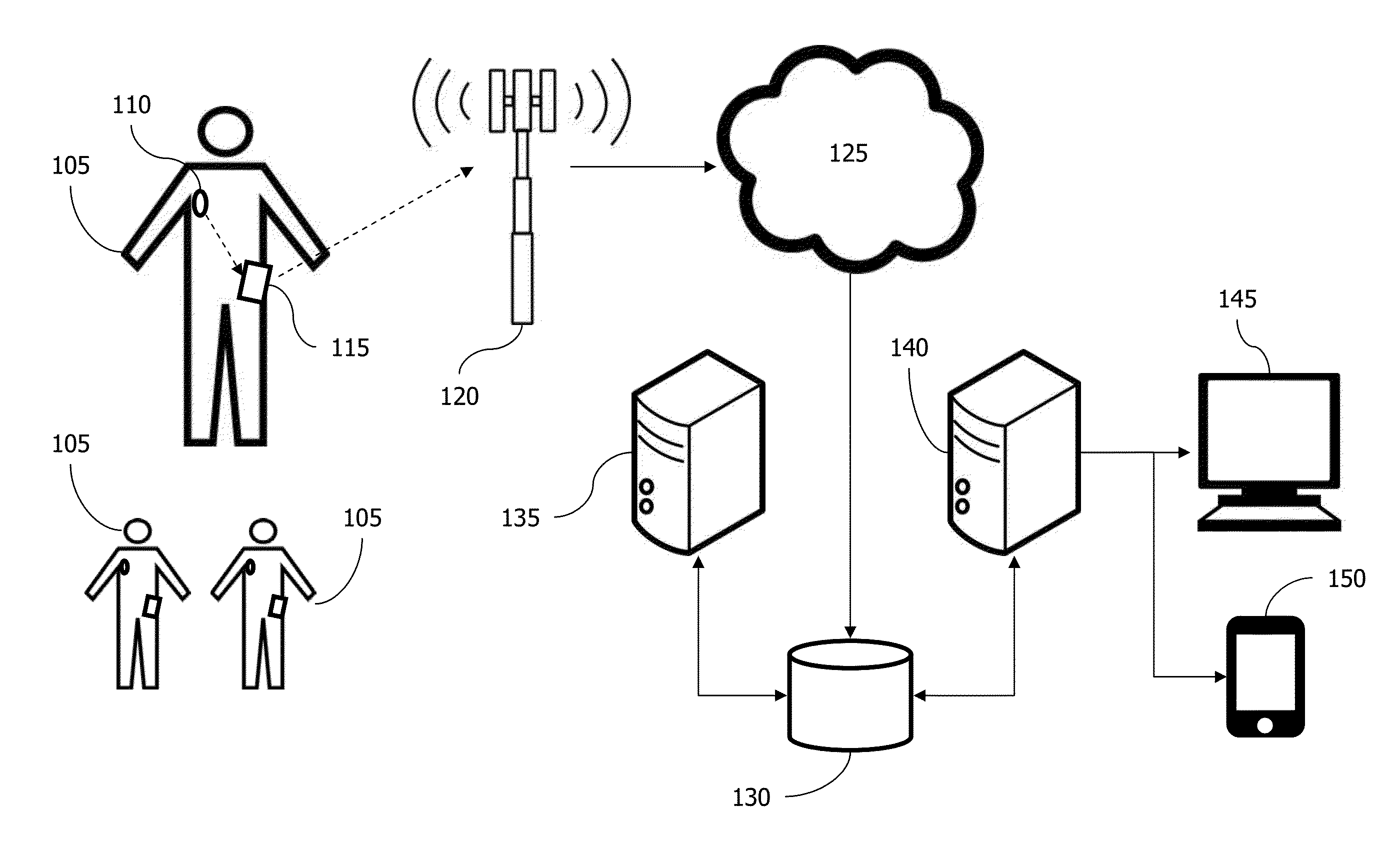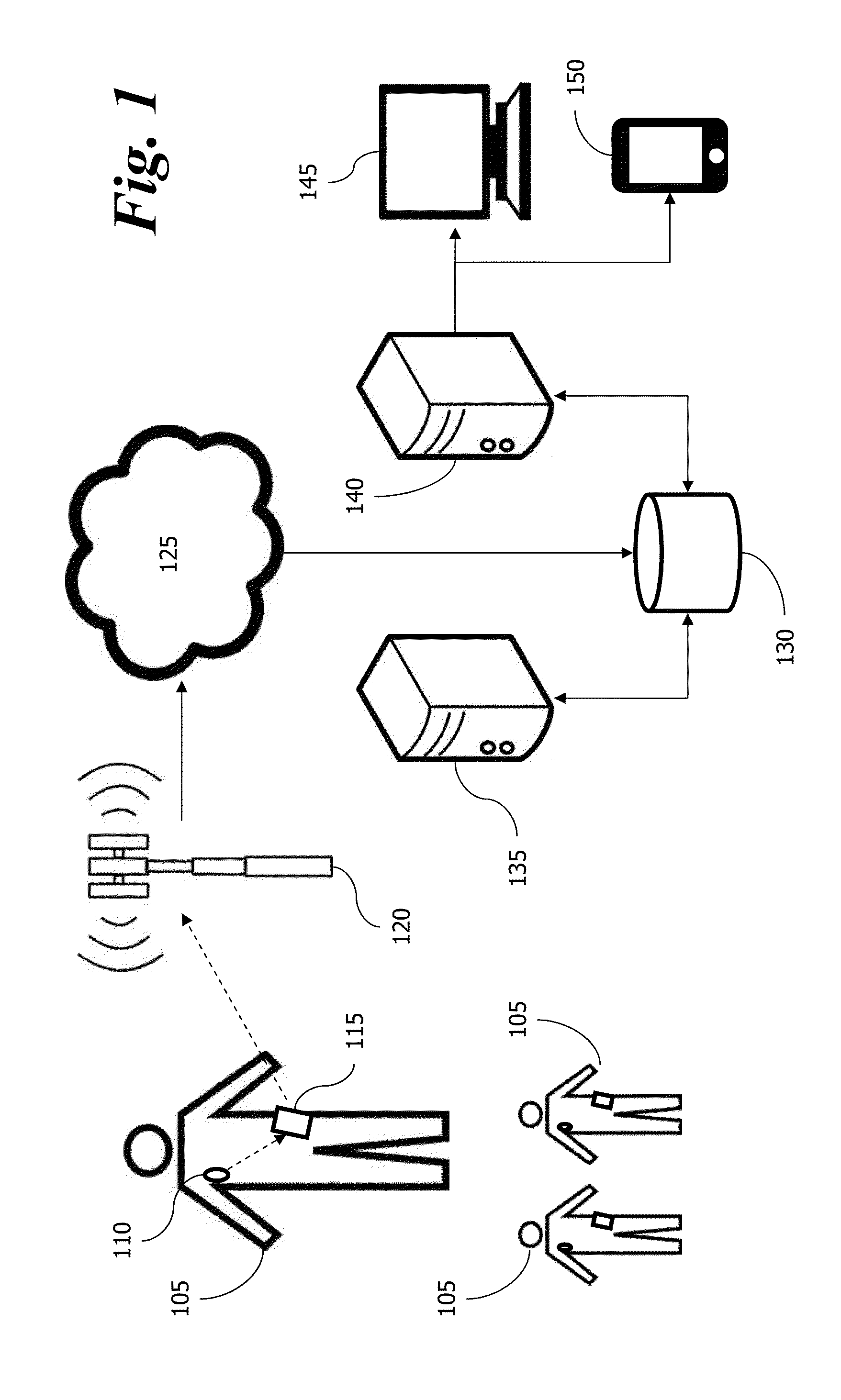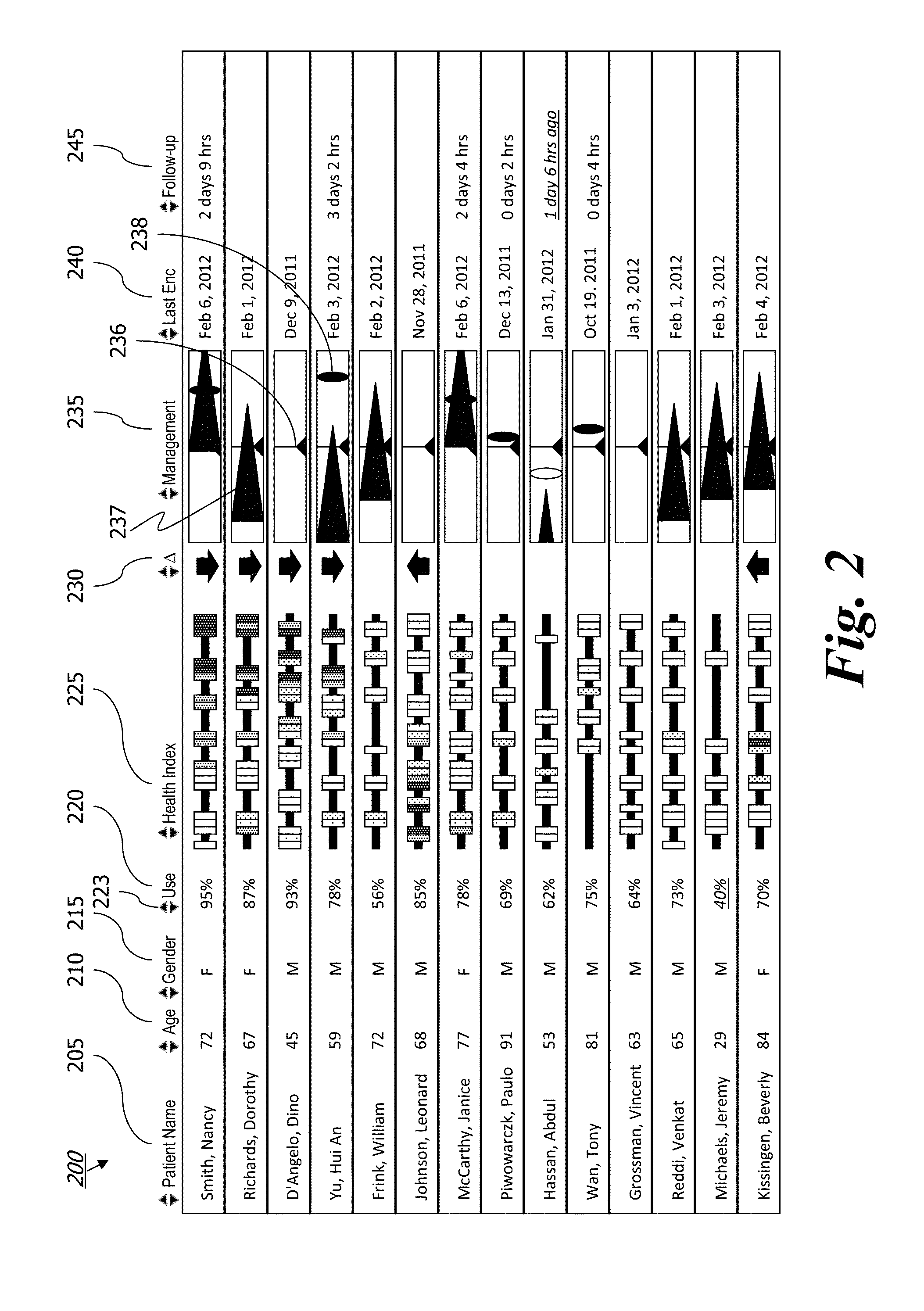System and Method for Priority-Based Management of Patient Health for a Patient Population
a patient population and priority-based technology, applied in the field of patient health monitoring, can solve the problems of inability to accurately diagnose health deterioration events, inability to accurately manage patient health, and inability to accurately predict health deterioration events, etc., to achieve the effect of facilitating data entry related problems
- Summary
- Abstract
- Description
- Claims
- Application Information
AI Technical Summary
Benefits of technology
Problems solved by technology
Method used
Image
Examples
Embodiment Construction
[0021]The present invention facilitates efficient management of patient health of a population of patients being monitored with physiological sensors, by analyzing and presenting patient health data to a clinician in an interactively sortable, prioritized manner based on cumulative time series behavior of a health index. The health index is a scalar value generally obtained, as described below in greater detail, from the fusion of analytical results based on multiple physiological variables from the patient, and is indicative of the normalcy or abnormality of the patient's physiology at a point in time. Continuous analysis of physiology data results in a time series of health index values. The inventive approach is exceptionally advantageous in the context of management of chronically ill patients in their at-home or nursing home environment, where early detection of persistent indications of deteriorating health suggests the need for timely (but not necessarily emergency) medical i...
PUM
 Login to View More
Login to View More Abstract
Description
Claims
Application Information
 Login to View More
Login to View More - R&D
- Intellectual Property
- Life Sciences
- Materials
- Tech Scout
- Unparalleled Data Quality
- Higher Quality Content
- 60% Fewer Hallucinations
Browse by: Latest US Patents, China's latest patents, Technical Efficacy Thesaurus, Application Domain, Technology Topic, Popular Technical Reports.
© 2025 PatSnap. All rights reserved.Legal|Privacy policy|Modern Slavery Act Transparency Statement|Sitemap|About US| Contact US: help@patsnap.com



